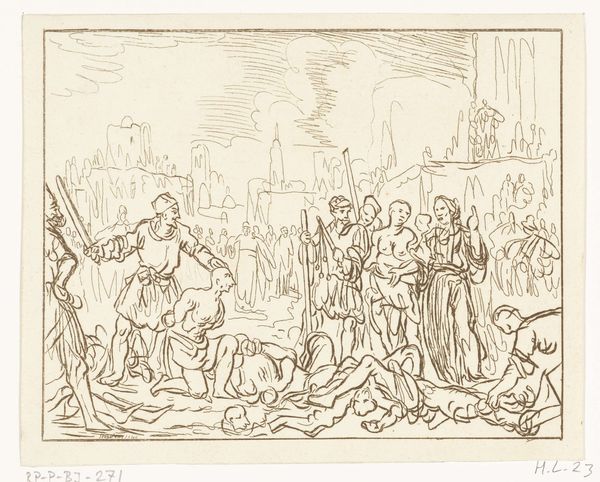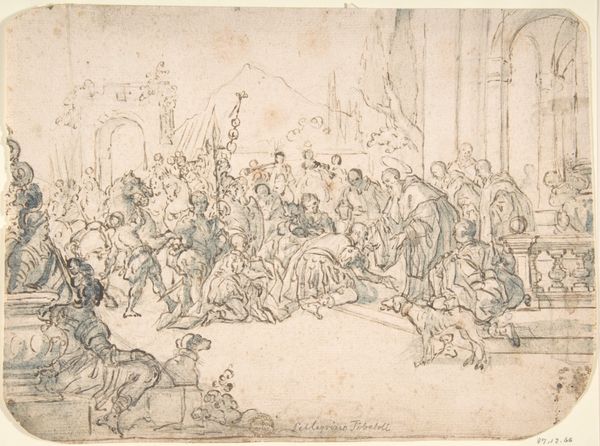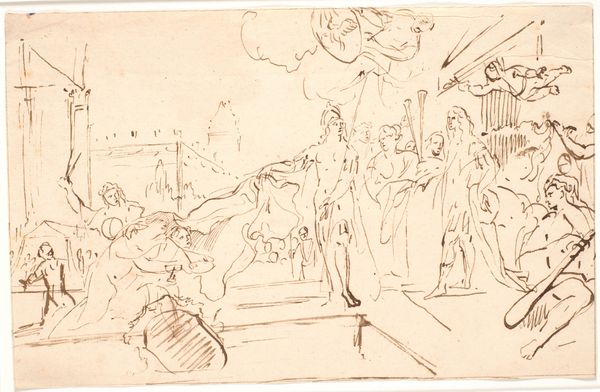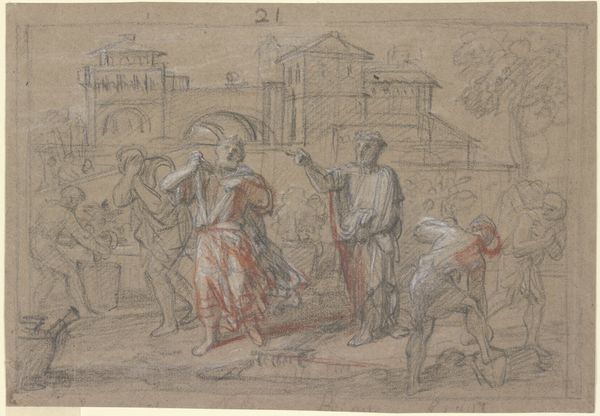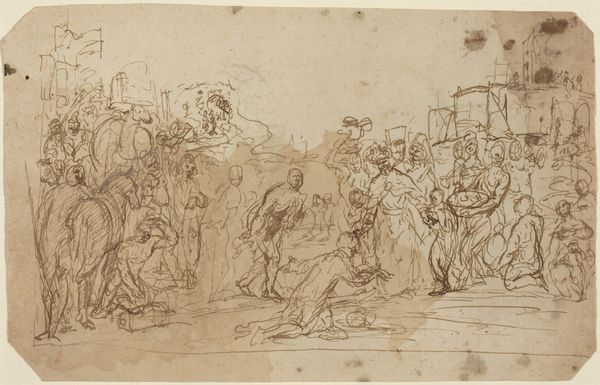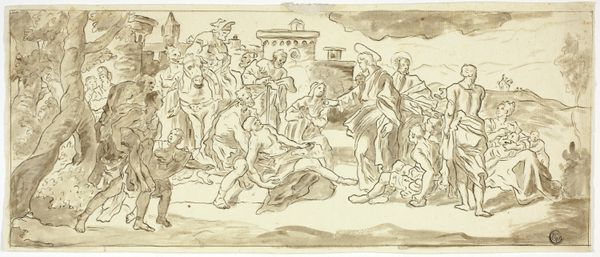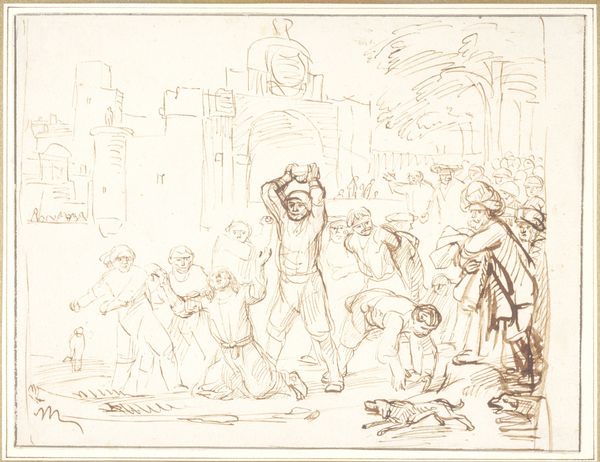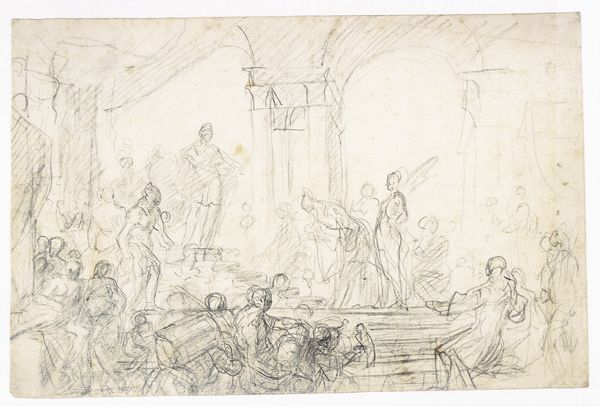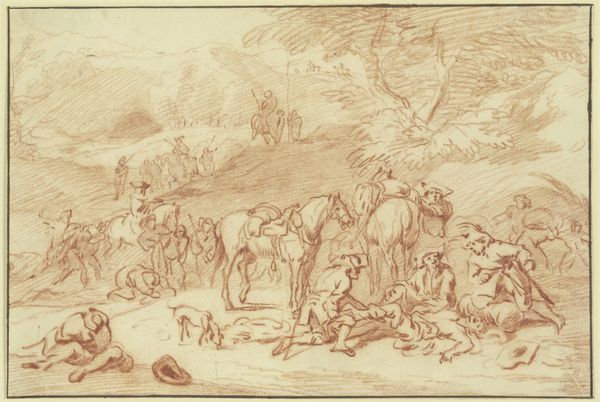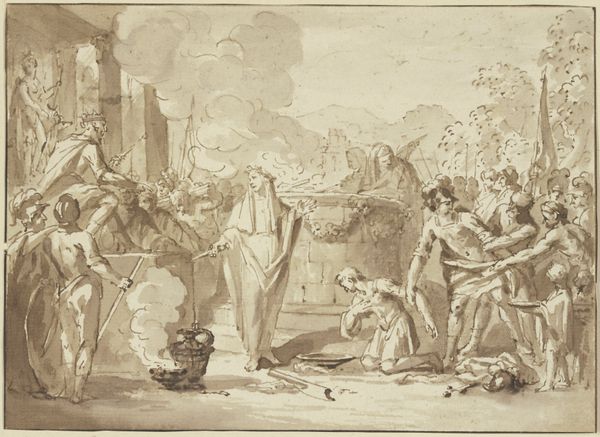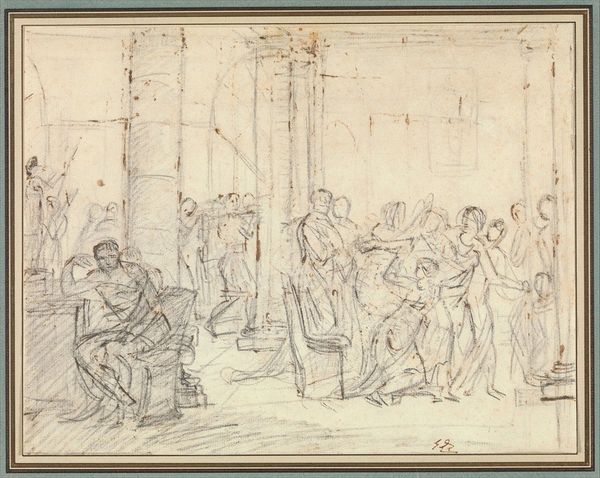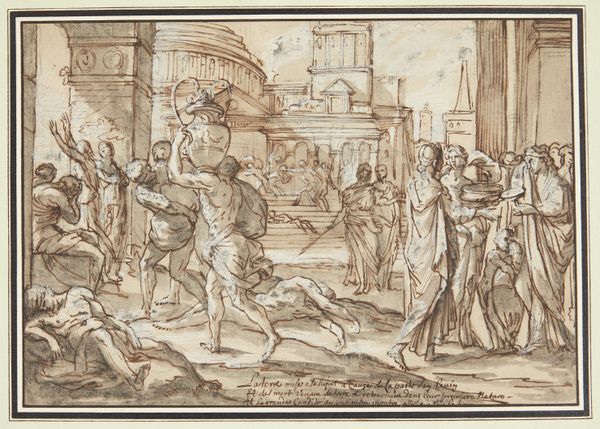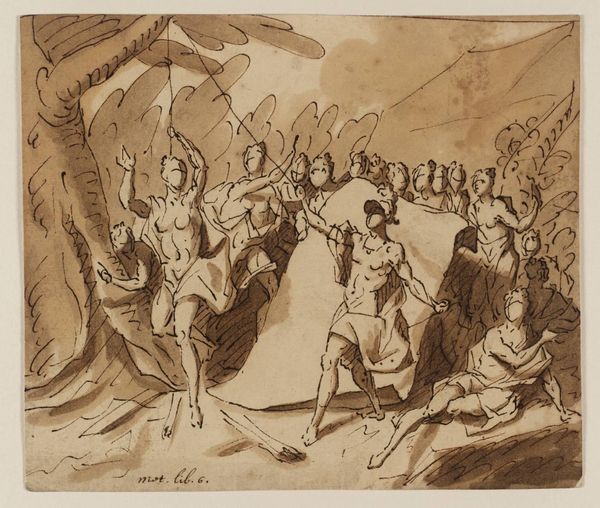
drawing, ink
#
drawing
#
narrative-art
#
baroque
#
etching
#
figuration
#
ink
#
history-painting
Copyright: Public Domain
Curator: Before us we have Jan Luyken's 1698 drawing, "Tod des Timotheus zu Ephesus," housed here at the Städel Museum. It's an ink drawing that feels intensely dramatic, don’t you think? Editor: Absolutely. There’s a chaotic energy in the strokes, and the monochromatic palette throws the violence into stark relief. You can almost feel the fury of the crowd through the hasty lines; look at how he has rendered those figures brandishing cudgels! It feels very immediate in its execution. Curator: Luyken, a Dutch Golden Age artist, was working in a time when history painting was being utilized as a means of both historical record and political commentary. The composition itself seems designed to provoke a reaction from viewers. Do you think it accomplishes this effectively through its materiality and methods? Editor: It's hard to look at those frantic figures and not feel implicated, yes. But the drawing's materiality, that very immediacy you see, stems from ink and paper - humble materials used to depict something very not humble: a public execution driven by fanaticism. Luyken knew his audience; this image served to not just depict an event but act as a didactic one. It is about the socio-religious conflict itself. Curator: It strikes me how he captures such frenzied movement. I understand this work as speaking directly to anxieties present in European society at the time, in which the role of religious martyrdom served to cement the boundaries of sectarian groups. The architectural elements in the backdrop appear almost Roman in style, adding another layer of historical complexity. Editor: The use of readily available materials is part of Luyken's rhetorical force. Cheap and plentiful, drawings could be reproduced as prints, further democratizing his message. Think about it - he is using industrial techniques that in their very function mimic popular rage and propaganda. How potent. Curator: Yes! This work seems particularly prescient today as public image becomes easily disseminated through the digital domain, which opens new avenues for social engagement, debate and influence, yet sometimes reproduces similar issues of conflict and manipulation. Editor: Agreed. Looking at the physical manifestation of something horrific in a fairly unpretentious medium definitely alters one's perspective. Thanks for guiding me. Curator: Thank you. Considering history through artistic production is vital to understanding how these moments continue to inform the present.
Comments
No comments
Be the first to comment and join the conversation on the ultimate creative platform.
